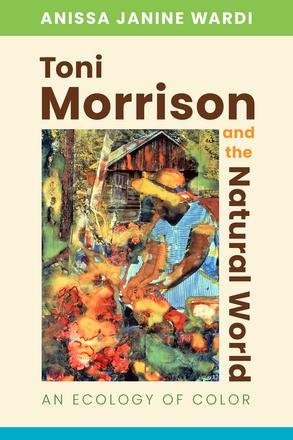
Toni Morrison and the Natural World
An Ecology of Color
The first ecocritical treatment of the entire range of the Nobel Laureate's mighty works
Description
Winner of the Toni Morrison Society Book Prize for Best Single-Authored Book, 2019-2022
Critics have routinely excluded African American literature from ecocritical inquiry despite the fact that the literary tradition has, from its inception, proved to be steeped in environmental concerns that address elements of the natural world and relate nature to the transatlantic slave trade, plantation labor, and nationhood. Toni Morrison’s work is no exception. Toni Morrison and the Natural World: An Ecology of Color is the first full-length ecocritical investigation of the Nobel Laureate’s novels and brings to the fore an unequaled engagement between race and nature.
Morrison’s ecological consciousness holds that human geographies are enmeshed with nonhuman nature. It follows, then, that ecology, the branch of biology that studies how people relate to each other and their environment, is an apt framework for this book. The interrelationships and interactions between individuals and community, and between organisms and the biosphere, are central to this analysis. They highlight that the human and nonhuman are part of a larger ecosystem of interfacings and transformations. Toni Morrison and the Natural World is organized by color, examining soil (brown) in The Bluest Eye and Paradise; plant life (green) in Song of Solomon, Beloved, and Home; bodies of water (blue) in Tar Baby and Love; and fire (orange) in Sula and God Help the Child.
By providing a racially inflected reading of nature, Toni Morrison and the Natural World makes an important contribution to the field of environmental studies and provides a landmark for Morrison scholarship.
Reviews
"Anissa Janine Wardi takes Morrison research in an entirely new direction. Her discussion of Morrison’s use of the natural world is seamlessly grounded in scientific knowledge so that the reader comes away with a much more complex understanding of the essential connection of the human world to its environment than is typical. Toni Morrison and the Natural World: An Ecology of Color is a tremendously sophisticated text, resisting a narrow comprehension of what literary criticism is. "
- Shirley A. Stave, coeditor of New Critical Essays on Toni Morrison's “God Help the Child”: Race, Culture, and History
"Conceptually dense but engaging in its readability, Toni Morrison and the Natural World may be especially useful to educators (from any discipline) who want to incorporate more ecocritical content into the classroom. This book will also be useful to scholars interested in learning more about the capaciousness of Black environmental literature."
- Ashia Ajani, Interdisciplinary Studies in Literature and Environment
"By linking the ecology of colors in the natural environment with the work of Nobel Laureate Toni Morrison's fiction , Wardi traces a direct line between racism and ecocide. The introduction, 'All Them Colors Was in Me,' links embodiment with material ecocriticsm and Morrisons vision of sustainability and color theory with bodies of color. THe chapters that follow focus on a particular color and the corresponding fiction. For example, brown, the color of skin, dirt, and compost, is used to explain meaning in Paradise and The Bluest Eye. Green, the color of life and healing, applies to Beloved, Home and Song of Solomon. 'Blue, the color associated with islands, swamps, water, and other ecotones' applies to Tar Baby and Love. This fascinating, insightful study concludes with the 'colors' of black and white, the epitome of no color and all color and the historical foundation of racial prejudice signified in A Mercy and Jazz. "
- L. L. Johnson, professor emerita at Lewis & Clark College, CHOICE